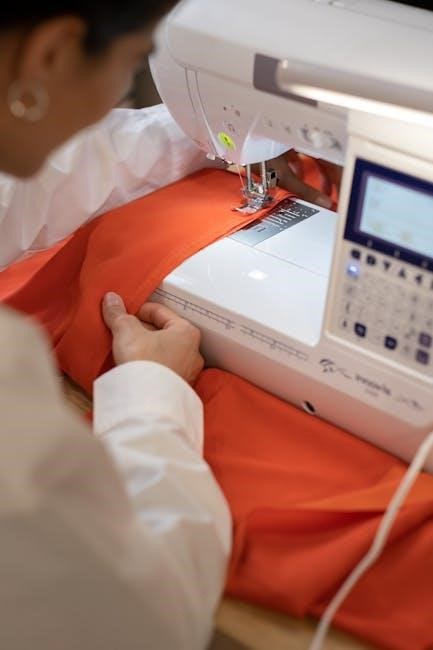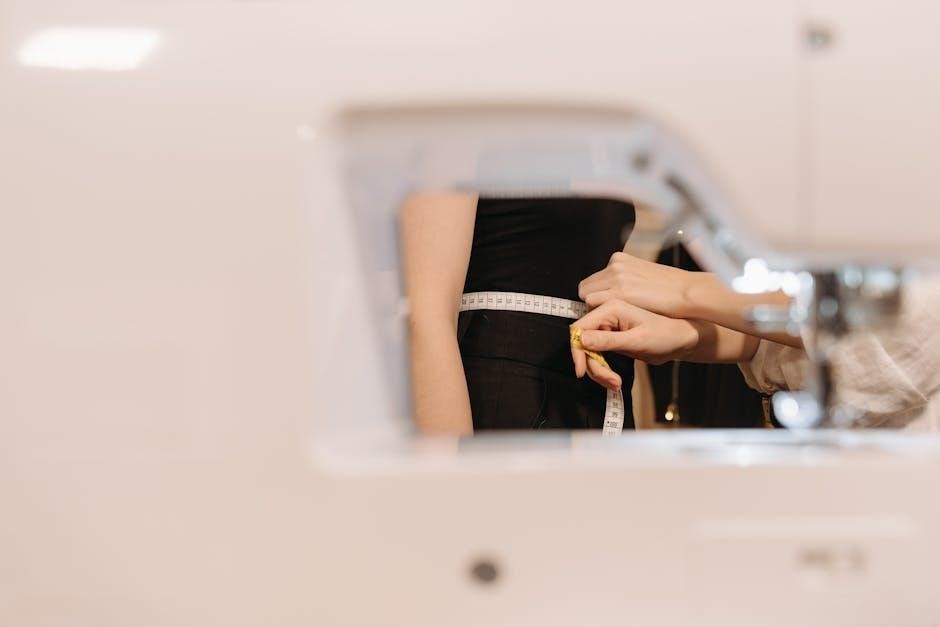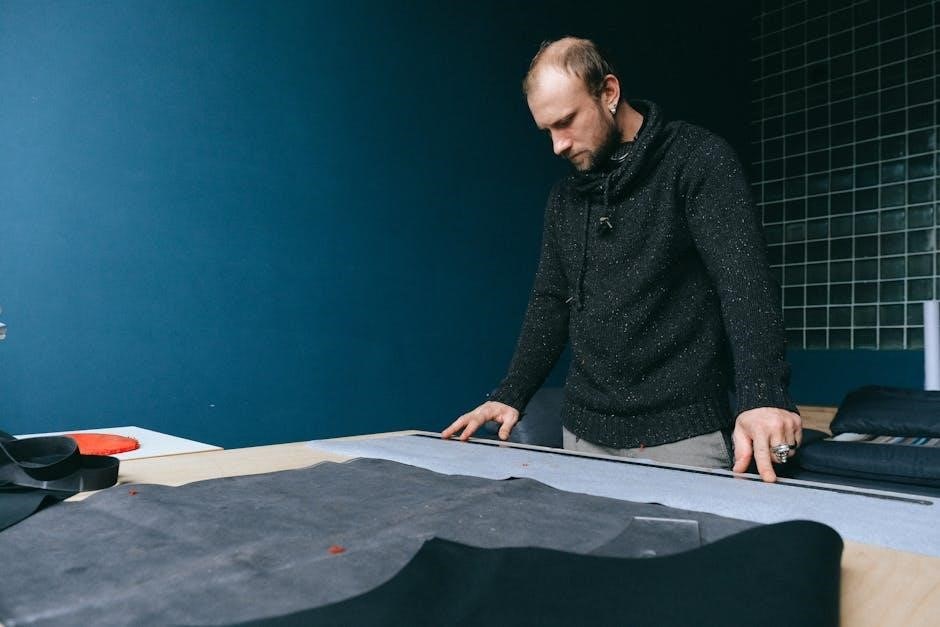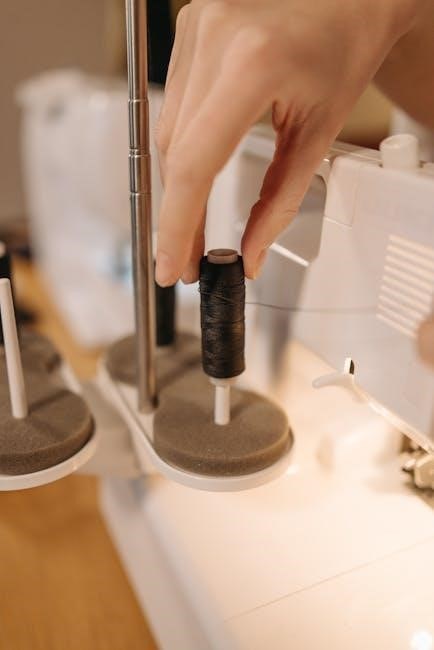
Deluxe Sewing Machine Made in Japan Manual: A Comprehensive Guide
This guide offers comprehensive assistance for owners of Deluxe sewing machines manufactured in Japan. We will explore how to find the correct manual‚ understand features‚ and maintain these vintage workhorses for optimal performance.
Deluxe sewing machines made in Japan represent a fascinating intersection of quality craftsmanship and global branding. Often produced as “Class 15 clones‚” these machines share design similarities with the Singer Model 15‚ making parts and some manuals potentially interchangeable. Many were badged with different names for various retailers‚ leading to a wide array of models under the “Deluxe” moniker. These machines are generally known for their robust construction and reliability‚ often described as workhorses. Finding the correct manual can unlock their full potential‚ covering threading‚ stitch adjustments‚ and essential maintenance for years of dependable use. Online resources and vintage sewing machine communities are invaluable for locating specific manuals or related information.

Identifying Your Deluxe Sewing Machine Model
Pinpointing your Deluxe sewing machine model is crucial for finding the correct manual and compatible parts. This section guides you through the process of locating key identifiers on your machine.
Locating the Model Number
The model number is your key to unlocking specific information about your Deluxe sewing machine. Typically‚ this number is stamped or printed on a plate affixed to the machine’s body. Look for it in several common locations. Check the base of the machine‚ particularly underneath‚ tilting it carefully for better visibility. Examine the back or sides of the machine‚ near the motor or power switch; Some models may have the number located on the front‚ perhaps near the controls or brand name. Don’t forget to check inside the bobbin case area or behind any removable panels. Once located‚ accurately record the model number‚ as even slight variations can impact manual compatibility and parts interchangeability.
Common Deluxe Sewing Machine Brands Made in Japan
Many Deluxe sewing machines were produced in Japan and sold under various brand names‚ often making identification challenging. Some common brands include “Brother”‚ known for models like the “Electro-Grand Deluxe‚” and machines badged as “Precision” or simply “Deluxe.” Brands like “Viscount‚” “Modernage‚” and “Super Deluxe” are also frequently encountered. Others such as “Good Housekeeper” were sold under retail store names‚ adding to the confusion. Many were “Class 15 Clones‚” copies of the Singer 15. Identifying the manufacturer can be difficult. Consulting vintage sewing machine forums or groups‚ especially those dedicated to Japanese machines‚ and sharing clear pictures‚ can help identify the brand and potentially find model-specific information or manuals.

Finding a Manual for Your Deluxe Sewing Machine
Locating a manual for your vintage Deluxe sewing machine requires exploring online archives‚ engaging with sewing communities‚ and understanding the potential for using Class 15 clone manuals.
Online Manual Archives and Databases
Numerous online resources specialize in hosting vintage sewing machine manuals‚ including those for Deluxe models made in Japan. Websites dedicated to sewing machine manuals often have searchable databases where you can input the model number or keywords to find a matching manual. Some sites offer free downloads‚ while others may charge a small fee.
Be sure to check reputable sources like sewing-machine-manuals.com‚ and explore general vintage sewing machine archives. If you have an instruction manual for a DeLuxe Precision Automatic Zig-Zag Sewing Machine Made in JAPan‚ this may also be very useful! Remember to verify the manual’s compatibility with your specific machine before relying on it for operation and maintenance.
Vintage Sewing Machine Groups and Forums
Online communities dedicated to vintage sewing machines are invaluable resources for locating manuals and troubleshooting assistance for Deluxe models made in Japan. Platforms like Facebook groups (e.g;‚ Vintage Japanese Sewing Machines) and specialized forums often have members with extensive knowledge and collections of manuals.
Posting a clear photo of your machine‚ including the model number‚ can help other enthusiasts identify it and potentially share a relevant manual. These groups can also provide advice on maintenance‚ repairs‚ and sourcing replacement parts. Engaging with these communities allows you to tap into collective expertise and find solutions specific to your Deluxe sewing machine.
Understanding Class 15 Clones
Many Deluxe sewing machines from Japan are Class 15 clones‚ based on the Singer 15 design. Recognizing this helps in finding compatible manuals and parts.
Characteristics of Class 15 Clone Machines
Class 15 clone machines‚ often badged with names like “Deluxe” or “Precision‚” share several key characteristics. They typically feature a vertical oscillating hook system and a low shank presser foot. These Japanese-made machines are known for their robust all-metal construction‚ contributing to their durability and reliability. Many incorporate zig-zag capabilities via attachments or built-in mechanisms. The stitch length is usually adjustable‚ and they often utilize readily available standard needles. Furthermore‚ these clones are recognized for their straightforward design‚ making them relatively easy to maintain and repair‚ even without specialized tools. Despite variations in brand names and cosmetic details‚ the underlying mechanics remain consistent. These machines are often praised as workhorses.
Interchangeability of Parts and Manuals
Due to their Class 15 clone status‚ many parts from different brands of Deluxe sewing machines made in Japan are often interchangeable. This is especially true for common components like bobbins‚ needles‚ and presser feet. While not a guarantee‚ a Singer 15 manual may offer relevant information regarding basic operation and maintenance. However‚ specific Deluxe model manuals are always preferable for detailed instructions. Online forums and vintage sewing machine groups can be valuable resources for identifying compatible parts and locating manuals. Always verify compatibility before attempting to use a part or manual from another machine to avoid potential damage. Generic manuals for Class 15 machines may also prove helpful.

Essential Manual Content
A complete manual will cover threading‚ bobbin winding‚ stitch selection‚ tension adjustment‚ and basic troubleshooting. These sections are vital for operating and maintaining your Deluxe sewing machine effectively.
Threading the Machine and Bobbin Winding
Threading a Deluxe sewing machine‚ especially a vintage model made in Japan‚ requires careful attention. The manual offers precise diagrams illustrating the correct path for the thread‚ ensuring proper tension and stitch formation. Bobbin winding is another crucial step‚ and the manual will detail how to load the bobbin correctly and adjust the tension for smooth‚ even winding. Proper threading and bobbin winding are fundamental for achieving consistent stitch quality and preventing common issues such as thread breakage or skipped stitches. These processes are essential for any successful sewing project.
Stitch Selection and Adjustment
Understanding stitch selection and adjustment is paramount for mastering your Deluxe sewing machine. Japanese-made Deluxe machines often feature a range of stitch options‚ from basic straight stitches to zigzag patterns. The manual provides guidance on selecting the appropriate stitch for different fabrics and sewing tasks. Adjusting stitch length and width is also crucial for achieving the desired results. The manual will explain how to use the machine’s dials or levers to fine-tune these settings. Experimenting with different stitch settings and fabric combinations is vital for unlocking the full potential of your Deluxe sewing machine.

Maintenance and Troubleshooting
Keeping your Deluxe sewing machine in good working order requires regular maintenance. This section addresses common problems and provides solutions for ensuring smooth operation and longevity of your machine.
Oiling and Cleaning Procedures
Proper oiling and cleaning are crucial for maintaining your Deluxe sewing machine’s performance. Regular oiling ensures smooth operation of moving parts‚ preventing wear and tear. Use sewing machine oil and apply sparingly to designated points as indicated in your manual or a similar Class 15 clone manual. Lint and dust accumulation can hinder performance; therefore‚ cleaning the bobbin area‚ feed dogs‚ and other accessible parts with a small brush is recommended. A clean machine sews better and lasts longer. Always unplug the machine before oiling or cleaning to prevent accidental start-up. Consult resources like vintage sewing machine forums for guidance.
Common Problems and Solutions
Deluxe sewing machines‚ like any mechanical device‚ can encounter issues. Common problems include thread breakage‚ skipped stitches‚ and tension problems. Thread breakage often stems from improper threading or poor-quality thread. Skipped stitches might indicate a bent or improperly inserted needle. Tension issues can result in uneven stitches; adjusting the tension dial according to your manual or a Class 15 clone manual is crucial. If the machine jams‚ check for tangled thread in the bobbin area. Regular cleaning and oiling‚ as detailed in the manual‚ can prevent many of these problems. Consult online forums for model-specific advice and troubleshooting tips.